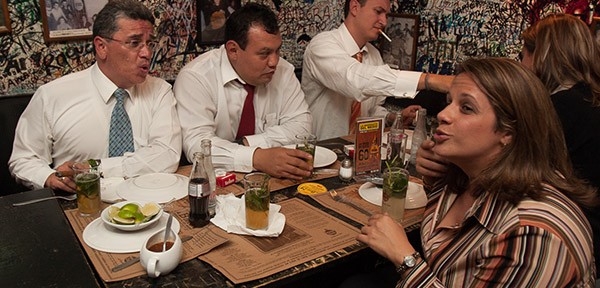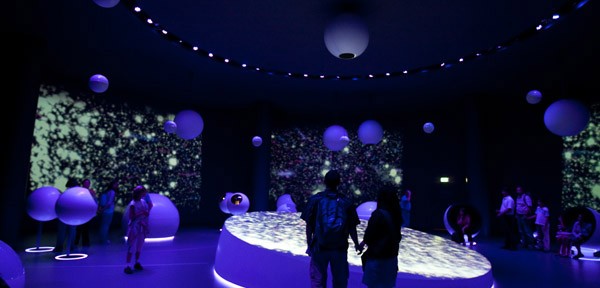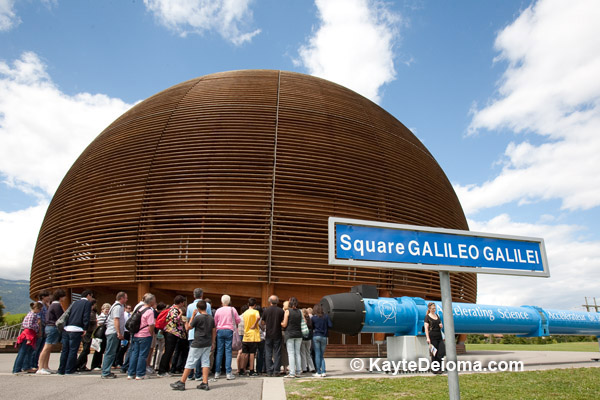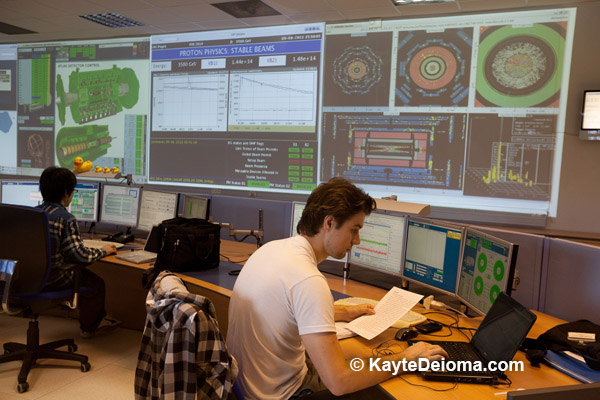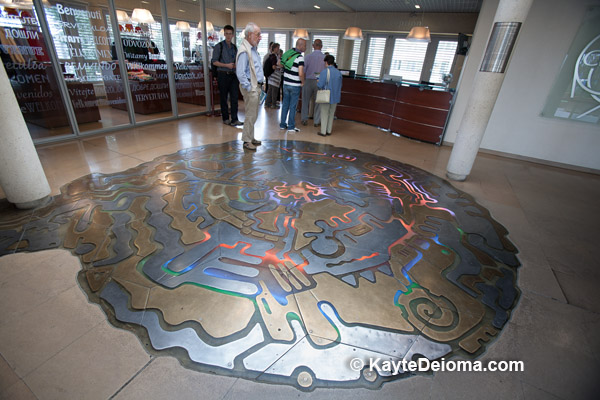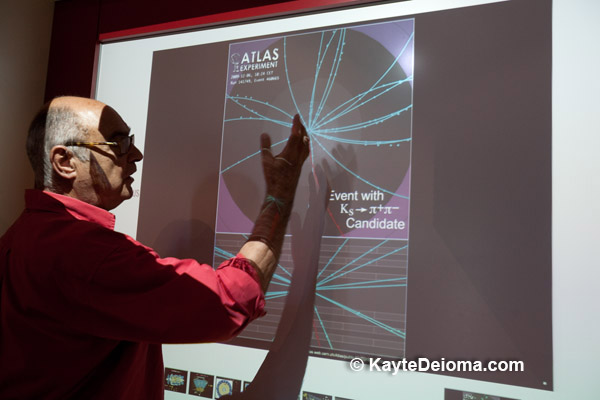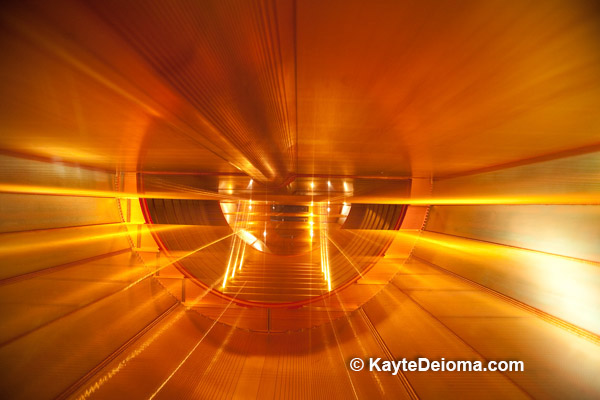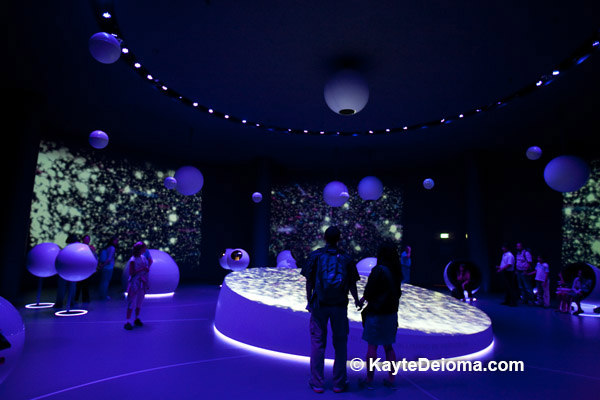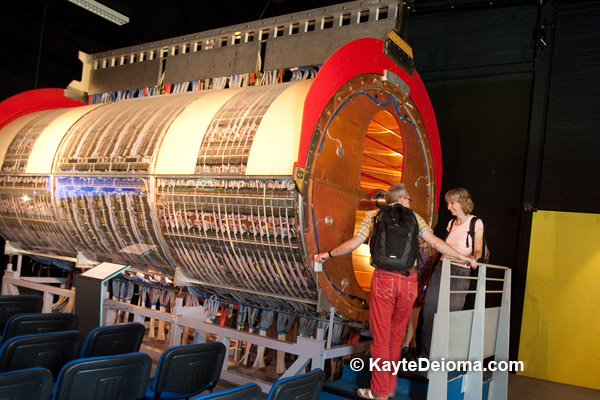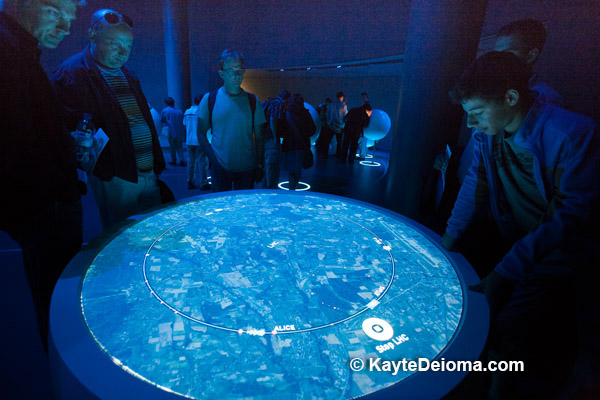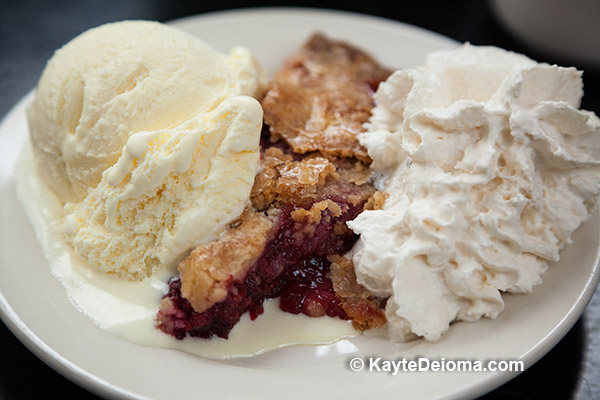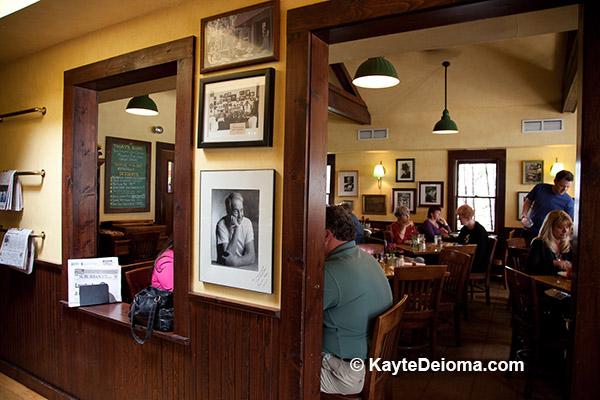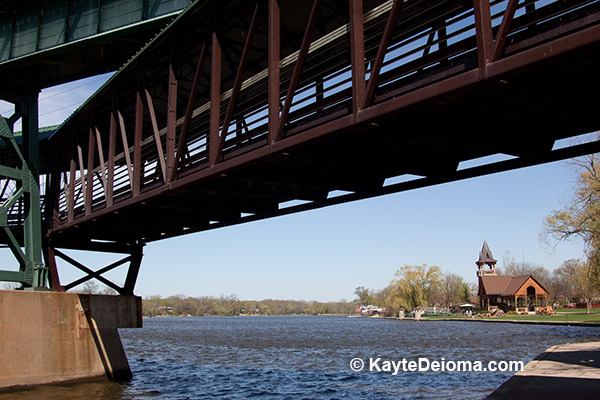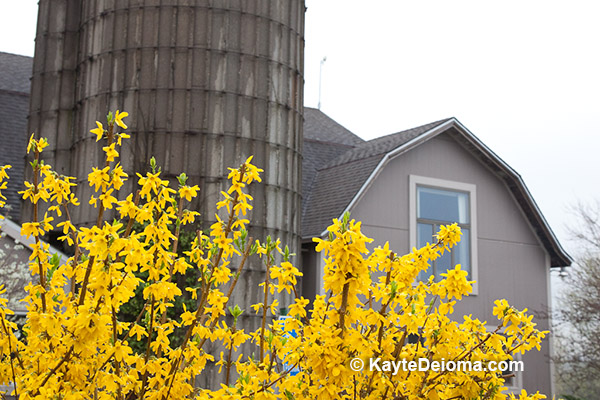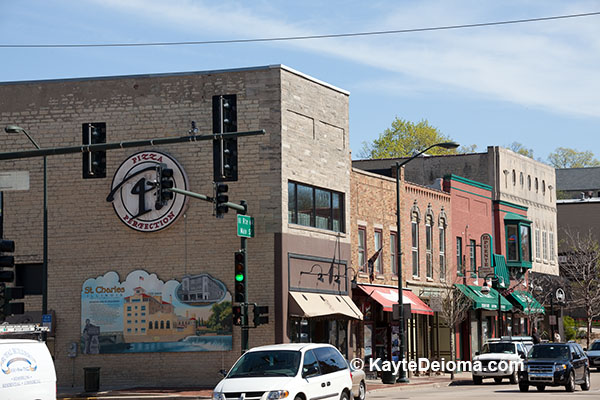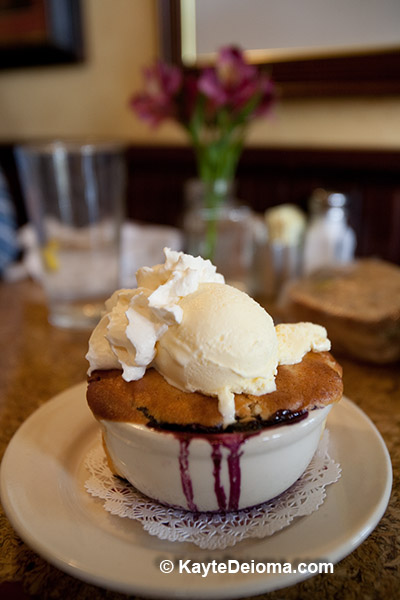Tapatios, the people of Guadalajara, Mexico, are known for their warmth and hospitality. I first encountered their friendliness during a summer semester abroad program in college. Arriving with my guitar and blond and Black roommates made it especially easy to meet people, since our crew stood out.
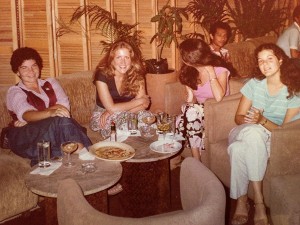
My first week in town my classmates helped celebrate my 21st birthday at La Copa de Leche, a 2nd floor restaurant with balcony seating overlooking the street. After dinner, we went upstairs to Las Calandrias lounge, named for the horse-drawn carriages that tour the city. Musicians Fernando and Chavo were performing popular Mexican and Latin American ballads on guitar and piano. When they took a break, the two young men were drawn like magnets to our obviously foreign group.
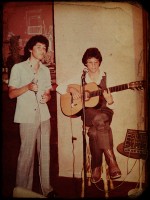
Chavo set his guitar down next to me. I started fingering a few chords. Before you know it, I was a regular part of the late night set at Las Calandrias, singing Spanish and American pop and folk songs for drinks.
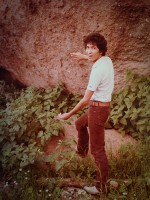
The blond found another handsome distraction, but the dynamic duo of Fernando and Chavo became part of our crowd, taking us swimming at a local pool, or for picnics in the country with appropriate musical accompaniment. They introduced us to many places we probably wouldn’t have discovered on our own. I was sorry to have to leave when the eight weeks was up.
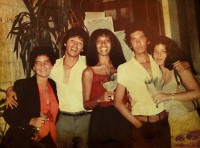
With such special memories, I had some trepidation returning to Guadalajara years later. How could the Guadalajara of today compete with such great memories? I was traveling with a camera instead of a guitar, and I was on my own, sans blond beacon. On my own, I blend in pretty well.
I arrived at the Quinta Real Hotel, a colonial-feel luxury complex near the Minerva Fountain on Calle de las Americas. I knew I was coming in at the end of the Fiestas Octubre arts celebration. I was too late for the grand processions of the morning, but I was hoping to catch some photogenic folklorico dancers or other activities happening that evening.
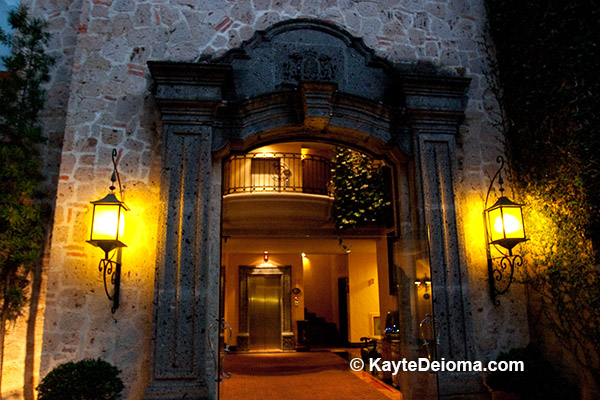
As a working travel photographer and writer, I don’t worry about traveling incognito. Loaded with my heavy camera gear, I approached the young man at the concierge desk to see if he had a festival schedule.
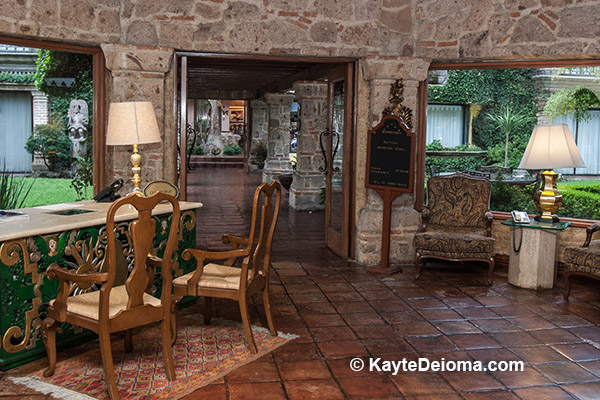
The concierge was a dapper 20-something young man in suit and tie with slicked back hair. His name tag identified him as Adalberto. Despite his impeccable English, I chose to revive my rusty Spanish in asking for guidance. At my request, he pulled out the day’s newspaper and checked the program for the festival. I was in luck; there were folk dancers and mariachis scheduled to perform downtown in the Plazas that evening.
Just then the sales manager, Arturo, came by to talk to Adalberto. When he heard that I was heading downtown to the Fiestas, he volunteered to give me a ride. He was new to Guadalajara himself and hadn’t seen any of the festivities. Adalberto decided he didn’t have anything better to do either and he was about to get off work, so he came along as well.
I don’t know if it was the big camera having a similar magnetic effect to a guitar, or simply Tapatio hospitality at work, but I set off with my two companions for the Centro.
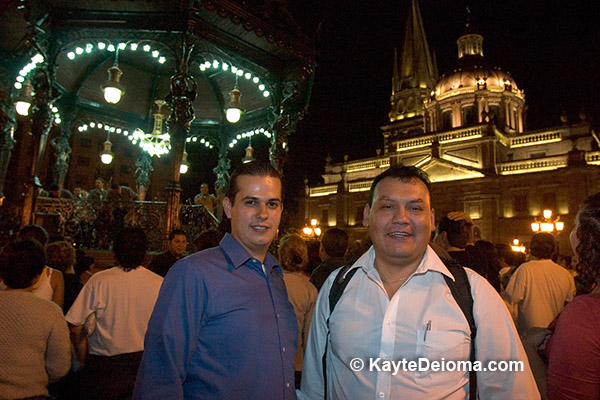
We found the Mariachi Internacional de Guadalajara playing in the gazebo or kiosko at Plaza de las Armas. They were just getting started as twilight was darkening to night. The lights of the gazebo framed the mariachis with a backdrop of the cathedral lit up against a sky that went deep cobalt for a few moments before settling into black. The sound of trumpets, guitarrons and voices filled the air. A perfect Guadalajara moment.
It lingered until the last notes of Jalisco no te Rajes extolled the virtues of Guadalajara as “the rarest pearl” of the state of Jalisco, whipping the crowd into a rousing final chorus an hour later.
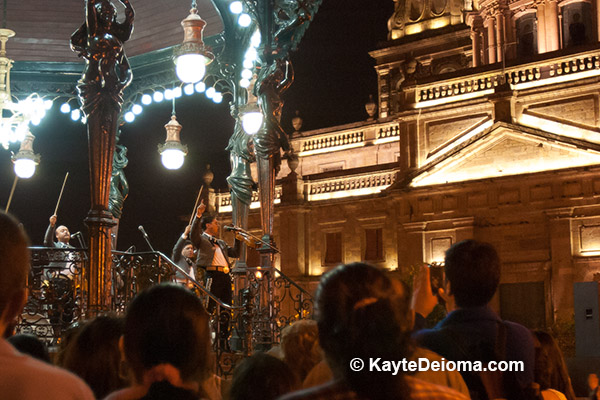
Colonial Guadalajara is laid out with four plazas forming a cross around the Cathedral along Avenida Hidalgo and Avenida Alcalde. The Plaza Guadalajara is in front of the church to the west, the Rotonda on the north side to the left and Plaza de Armas to the right. Behind the cathedral, the two-block Plaza Liberacion makes up the long branch of the cross with Teatro Degollado at its base. Beyond the theatre to the east, Paseo Degallado is a 3-block pedestrian shopping zone built up over the last couple decades, adding kitschy tourist attractions like Ripley’s Believe it or Not to the traditional colonial offerings before ending at Plaza Tapatia.
After listening to the mariachi concert, we decided to walk around the Cathedral to Plaza Liberacion, where we found stone carvers competing in the National Stonework Competition. Some of them had taken off for the night, but others were still hard at work chiseling massive rocks into abstract shapes, bears, lions, Madonnas and other religious figures.
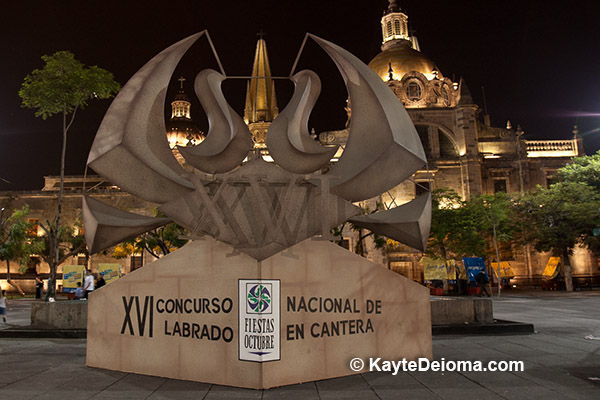
We continued past the Teatro Degollado with its European-style allegory above the front colonnade, and in the next block found a temporary outdoor stage had been set up at the beginning of the Paseo Degollado. For the next hour we enjoyed a spectacle of folklorico dancers. Raven-haired beauties in jewel-toned blouses swirled their flowered skirts; charros in cowboy hats kicked up their boots; masked viejitos in serapes shuffled in circles; and nimble dancers wielded machetes for our nail-biting entertainment.
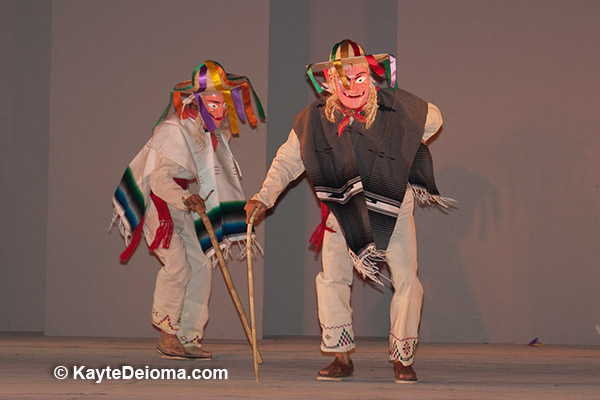
My two escorts were reveling in their spontaneous immersion into their own culture, away from the day to day of hotel business. The music followed us back to the Quinta Real, where, in no hurry to end the evening, we went to the restaurant and enjoyed a late dinner with a background of original compositions by local pianist José Luis Altamirano.
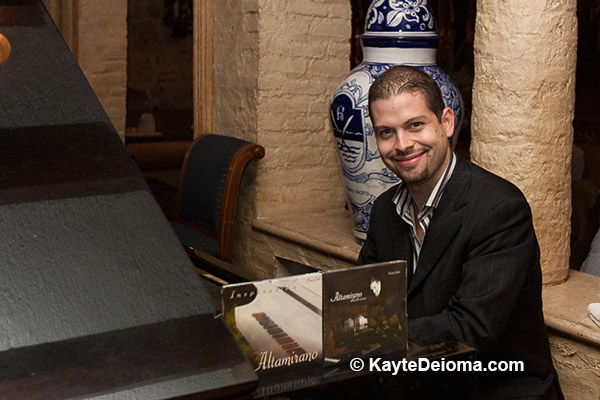
Over dinner, I shared tales of my time as a lounge singer at Las Calandrias, only to be told that the restaurant and bar were long gone, replaced by a new university building. That chapter in my history firmly closed, to be revisited no more.
In the morning, Arturo introduced me to his boss, Carlos, the hotel’s general manager. “Carlos loves to sing,” Arturo told me. “I told him you know how to sing Spanish songs.”
“You should come with us tonight,” Carlos invited, “Some of the managers are having an informal meeting at a great Cuban Bar.”
So after a day of exploring Guadalajara on my own, I joined the Quinta Real crew at La Bodeguita del Media, a two-level Cuban restaurant and nightclub advertising 2 for 1 mojitos on a yellow banner out front. In addition to the lethal rum beverages, the draw of the Bodeguita was the music.
Two different roaming bands of musicians moved from table to table taking requests, one upstairs, one downstairs. Then they’d switch. When the musicians came our way, Carlos was ready with his first request – a song I didn’t recognize – which he sang along with gusto. Since the band played predominantly Cuban music, I didn’t recognize much besides the rhythm.
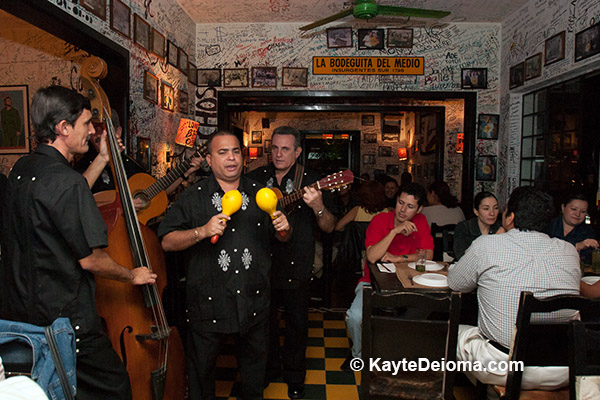
Others at our table joined in for a few songs, but I could only sing along on a few choruses, so Carlos insisted that I make a list of songs that I know in Spanish to see if the musicians knew any of them. Since I know mostly Mexican mariachi, folk songs and ballads, they didn’t, but Carlos did, so we traded a few choruses across the table after the musicians had moved on. This was how I remembered Guadalajara – warm welcoming people making music together. I felt right at home.
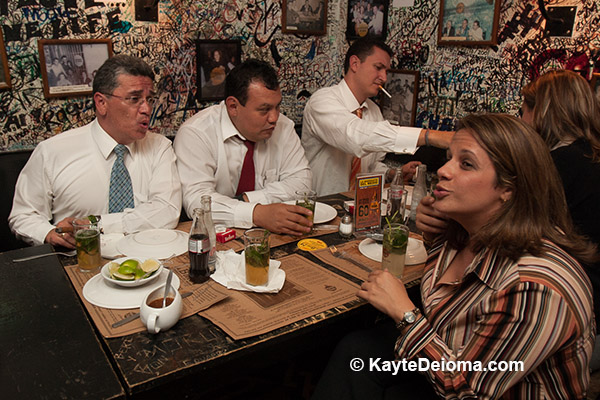
The next night I found out that Carlos had an ulterior motive when asking for the list of songs I knew. After most of the patrons had cleared out of the hotel restaurant and bar, Carlos approached me. Nodding toward the smiling guitarist who had been entertaining us for the last couple hours, he said, “He knows how to play Como and El Quelite,” – two songs from my list. As it turned out he also knew some Beatles, John Denver, Simon and Garfunkel and a lot of other songs Carlos and I could join in, so we kept our little jam session going into the wee hours of the morning.
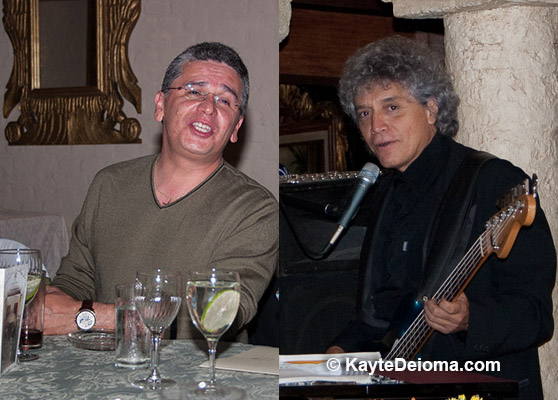
As I headed reluctantly to the airport the next day, already feeling nostalgic and grateful for the wonderful memories that I would have from this trip, the last verse of El Quelite kept running through my head, defining my relationship with this beautiful city and its people.
Yo no canto porque se, ni porque mi voz sea buena. Canto porque tengo gusto en mi tierra y en la ajena.
Mañana, me voy mañana. Mañana me voy de aquí. El Consuelo que me queda, que se han de acordar de mi.
I don’t sing because I know how, nor because my voice may be good. I sing because I enjoy my country and others too.
Tomorrow, I go tomorrow. Tomorrow I go from here. My only consolation is that they’ll remember me.
After all, how many gringas show up knowing all the verses to El Quelite?
Read more about Things to Do on a Rainy Day in Guadalajara.

